Home » John Jay Scholars on the News
Category Archives: John Jay Scholars on the News
John Jay Institute Director Champions Education, Advocacy, and Policy Change for Black Empowerment
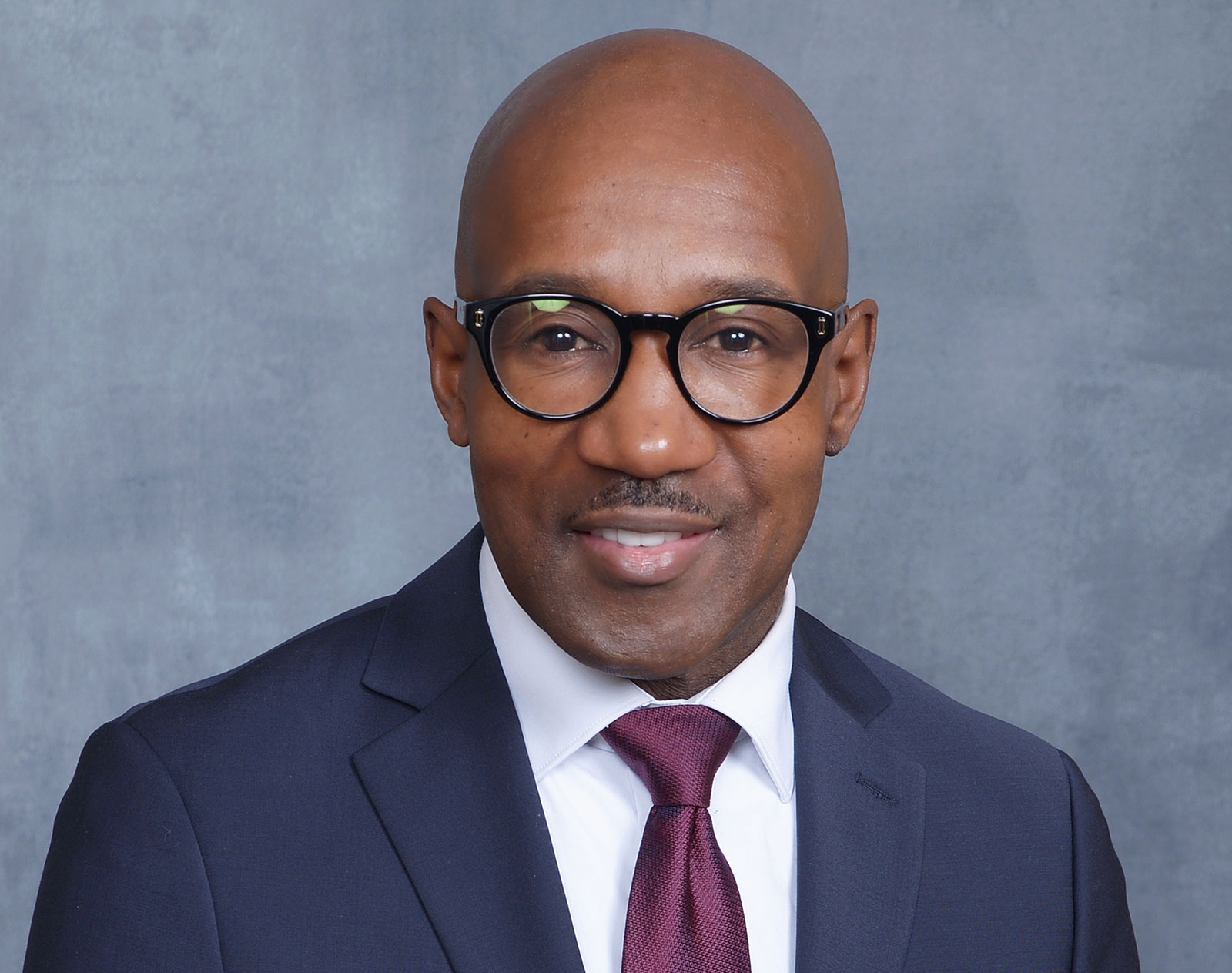
In celebration of Black History Month 2024, Andre Ward, the Executive Director of the John Jay Institute for Justice and Opportunity, reflects on a journey shaped by personal experiences within the criminal legal system. From incarceration to becoming the John Jay Research Center Director, his experiences drive a vision to empower formerly incarcerated individuals through education and to influence policy changes addressing social and racial inequalities. Read more about his background in the Q&A below.
As we celebrate Black History Month, can you share a bit about the journey that led you to John Jay’s Institute for Justice and Opportunity and a professional achievement that you believe has contributed to advancing justice and opportunity for the Black community?
I came to the institute as a result of my past involvement with College Initiative in 2009. I was released from incarceration on January 16, 2009 (the day Martin Luther King Jr’s birthday was observed), and two weeks later, I enrolled in Medgar Evers College. Earning both undergraduate and graduate degrees from CUNY’s Medgar Evers and Herbert H. Lehman Colleges, respectively, created opportunities for me to deepen my commitment to empowering the Black Community. After earning my Master’s Degree in Social Work, I was asked by the department chair at Medgar Evers College to return as an adjunct lecturer, where I taught mostly Black (and Latinx) students for 4 ½ years. Following this professional achievement, I localized myself in non-profit reentry/policy/advocacy work, culminating in a major New York City legislative win with the passage of the Fair Chance for Housing Act in December 2023. This legislation would prevent people with a conviction record from being discriminated against when applying for housing. For many justice-impacted college students like those whom we serve at the Institute for Justice and Opportunity, housing is indispensable to creating stability. This important legislation would protect them and the other 750,000 New Yorkers (80% of whom are Black and Latinx) from being denied access to housing solely on the basis of past justice system involvement.
How has your previous experience prepared you for the role of Research Center Director at the Institute for Justice and Opportunity?
Being directly impacted by the criminal legal system and working with diverse groups and students who had and did not have justice system involvement has prepared me for the role of Research Center Director at the Justice and Opportunity Institute. Additionally, my training as a social worker, policy/legislative change agent, and advocate for justice, fairness, and equity in education, employment, and housing – especially for people with conviction records – has also prepared me for this role. Serving in various capacities in New York City non-profit starting with providing job readiness/career coaching to facilitating academic and life skills workshops for students at Baruch College’s SEEK program and overseeing restorative justice/alternatives to incarceration work for young adults ages, serving as director of workforce development and executive leveled roles in advocacy and education and employment services, has prepared me for this role. My experience of being incarcerated has also served to prepare me for this role.
What is your vision for the Institute in promoting justice and opportunity, particularly within the context of Black communities?
My vision is to expand how we equip formerly incarcerated students with the knowledge and skills necessary for securing gainful employment, an essential factor often impeded by the stigma of a criminal record. Deepening existing stakeholder relationships while simultaneously innovating in areas of program service provision is part of my vision to move toward national and international education efforts.
Given the current social and racial inequalities landscape, how do you see the institute’s role in influencing policy changes that address these disparities?
The institute can support advocacy efforts that address discrimination in education. It can also join voting rights efforts to get our students involved in changing policy/legislation that impacts their lives. Through narrative sharing and engaging elected officials in the city and state, IJO’s students can become empowered to organize their communities to facilitate change. By doing so, members of the community become co-creators of public safety, thus creating the world they want to see and be in.
How do you see the institute actively contributing to the ongoing narrative of Black history and progress?
Education transcends the mere acquisition of knowledge; it serves as a catalyst for personal transformation. For formerly incarcerated individuals, this transformation can be profound. Education instills self-worth, purpose, and a vision for the future, offering a beacon of hope and a pathway to self-improvement. IJO will continue to serve as a place where justice-involved students can come. And through the impact IJO has on students, coupled with students developing an understanding of themselves, they will become assets to the community, creating a history of contribution that adds value to the black community and humanity.
IJO will actively nurture essential life skills, including critical thinking, problem-solving, and decision-making, which can be a powerful tool for psychological healing, helping individuals overcome the stigma and emotional burdens associated with their criminal history.
Western and Redburn (2017) emphasize in their seminal work, Education as Crime Prevention: The Case for Reinvesting in Prison Higher Education, that the role of education is to serve as a platform for self-improvement and a means for shifting individuals’ perspective from their past to their potential. This transformational aspect of education is pivotal in successfully reintegrating formerly incarcerated individuals into society, and IJO will maintain this work – especially during Black History Month.
How are you celebrating Black History Month?
I am celebrating Black History Month by actively making monetary and skills contributions to small Black organizations that support the communities we come from and focus on reentry and higher education services for people with a conviction record. I am also celebrating the amazing good fortune I have to serve our students alongside my deeply committed colleagues at IJO. Together, we are making a difference in the lives of Black people in particular, and humanity generally – one powerful academic student at a time.
Read more about the John Jay Institute for Justice and Opportunity here.
Sewage and the Science of Public Health – Dr. Shu-Yuan Cheng and Dr. Marta Concheiro-Guisan Track Wastewater Contaminants

Wastewater is a topic that the average New Yorker doesn’t think about often, but perhaps we should. Sewage and run-off, over a billion gallons of which are treated every single day in New York City by 14 wastewater resource recovery facilities, are a valuable resource for scientists.
Wastewater sampling has been a useful tool for public health researchers tracking the COVID-19 pandemic over the last two years. The Centers for Disease Control (CDC) launched the National Wastewater Surveillance System in September 2020 as a means of tracking virus spread and community prevalence. Viral genetic material is transmitted in fecal matter to the sewers and waste treatment plants, where researchers can take samples. Their work can serve as an early warning of community spread, track variants, and inform public health strategies for responding to the virus. Even better, wastewater surveillance doesn’t require individuals to seek out healthcare in order to capture information, meaning that the resulting data can include people who may be asymptomatic, who have taken home tests, or who have not been tested at all.
Wastewater data have figured prominently in several interesting COVID-19 stories recently in the news. In January 2022 the CDC reported that mutations associated with the Omicron variant showed up in New York City wastewater in November 2021, before the variant was officially reported in South Africa and at least a week before the first U.S. case was identified via clinical testing, suggesting that Omicron was likely circulating in communities before cases could be officially confirmed. And The New York Times recently reported on mysterious fragments of viral RNA with novel mutations detected in NYC wastewater, which are stumping researchers. They haven’t been able to pin down where these fragments are coming from, nor why these mutations have not shown up in clinical testing of human or animal populations in the city.
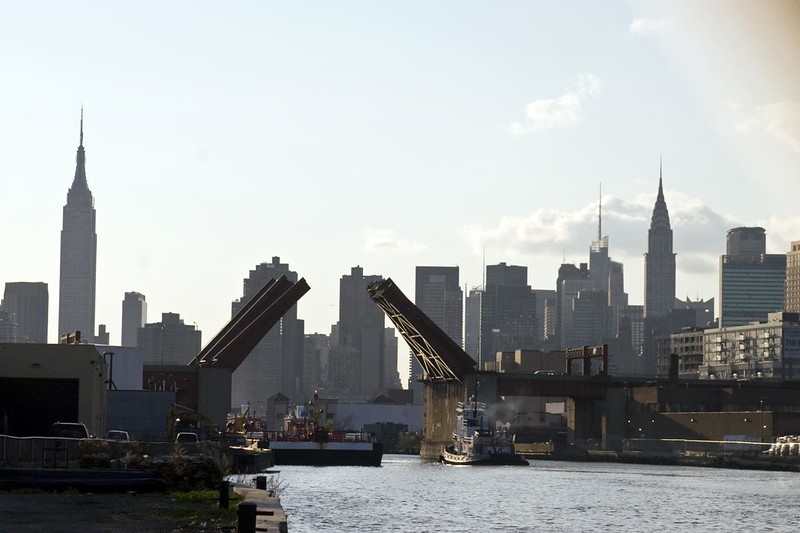
Two John Jay College researchers, Dr. Shu-Yuan Cheng and Dr. Marta Concheiro-Guisan, are also big proponents of wastewater sampling studies as a public health tool. Their own research, published in 2019, tracked drug use over one year in New York City, using one-time grab samples to test for levels of cocaine, nicotine, cannabis, opioids, and amphetamines in the sewage. Now, the scientists are collaborating with non-profits that test the health of the city’s waterways, trying to correlate levels of pharmaceuticals in our rivers with the amount of harmful bacteria.
To Dr. Cheng and Dr. Concheiro-Guisan, wastewater analysis’s great strength lies in early warning and early intervention. “It’s a great tool for prediction, for public health, crime fighting, and disease [prevention] purposes,” says Dr. Cheng. “The official report is often too late, but if you can do an early intervention, find the issue and start addressing it, there’s a lot you can do.”
“We looked at wastewater because we saw the utility,” says Dr. Concheiro-Guisan. “This is a different application [than viral tracking] but with the same thought: that what we eliminate from our bodies tells you a lot about your population.”
However, the United States is late to the game. Though the CDC has had results with its national COVID-19 tracking program, both researchers lament the lack of a centralized American body to apply this research to other public health applications. They’d like to see the U.S. follow the example set in European countries, China, Australia, and increasingly in South America, where governments have applied wastewater sampling to create campaigns warning their citizens about novel psychoactives, catch drug manufacturers, and more.
“It’s a very important public health tool that is showing results,” says Dr. Concheiro-Guisan. “If you start in the biggest city in the country, if you start in New York, then others will follow.”
 Dr. Shu-Yuan Cheng is an Associate Professor and Chair of John Jay’s Department of Sciences. Her research is in the areas of toxicology and forensic pharmacology, including the roles that environmental toxins play in neurodegenerative diseases, identifying the target genes and signaling pathways affected by environmental toxins, and investigating pharmacological mechanisms of anti-cancer medications.
Dr. Shu-Yuan Cheng is an Associate Professor and Chair of John Jay’s Department of Sciences. Her research is in the areas of toxicology and forensic pharmacology, including the roles that environmental toxins play in neurodegenerative diseases, identifying the target genes and signaling pathways affected by environmental toxins, and investigating pharmacological mechanisms of anti-cancer medications.
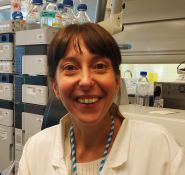 Dr. Marta Concheiro-Guisan is Assistant Professor of Forensic Toxicology in John Jay’s Department of Sciences. Her research focuses on the development and validation of analytical methods by gas and liquid chromatography tandem mass spectrometry and their application to different specimens, the detection of drug exposure during pregnancy, and the toxicological study of new psychoactive substances.
Dr. Marta Concheiro-Guisan is Assistant Professor of Forensic Toxicology in John Jay’s Department of Sciences. Her research focuses on the development and validation of analytical methods by gas and liquid chromatography tandem mass spectrometry and their application to different specimens, the detection of drug exposure during pregnancy, and the toxicological study of new psychoactive substances.
A Critical History of Incarceration in New York City
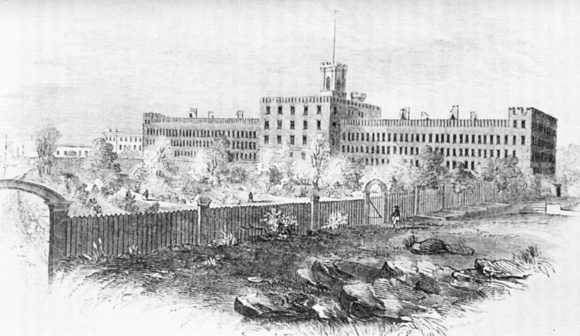
Dr. Jayne Mooney is an Associate Professor of Sociology at John Jay and a member of the doctoral faculty of Women’s Studies and Sociology at the CUNY Graduate Center. She is also a director and founding member of the Critical Social History Project (CSHP), a research initiative and part of John Jay’s Social Change and Transgressive Studies Project that draws on archival material to shed light on the history of incarceration in New York City.
The project began in 2015 with a conversation spurred by reporting on abuse, poor conditions, and a rash of tragedies at Rikers Island; how best, Mooney and colleagues wondered, to preserve the memories of those who had been affected by the infamous jail, including not only the incarcerated but also their friends and families, guards and educators? And so they began the “Other City” project, which forms the largest component of the CSHP. Informed by their research into the history of New York’s penitentiary system, Mooney’s working group is pointing out the problems inherent in Mayor Bill de Blasio’s administration’s proposal to close Rikers and open four new city jails.
“On the most basic level, what we’re showing is that the current proposals are reinventing the wheel. It’s the same thing that’s always happened. Closing an institution and setting it up again, you’re going to have the same problems, because you’re not getting to those deep-rooted, structural issues,” says Mooney.
Reinventing the Wheel

In a forthcoming article, “Rikers Island: The Failure of a ‘Model’ Penitentiary” due to be published in The Prison Journal in 2020, Mooney and her co-author, CUNY graduate student Jarrod Shanahan, go through the instructive failures of incarceration reform in New York City back to the 1735 construction of the Publick Workhouse and House of Correction. They argue that a lack of historical documentation has allowed policymakers to strategically “forget” the failures of past “model” or “state of the art” institutions, continually replacing old jails with new without a look at the larger issues that have led to waves of highly praised but ultimately unsuccessful penal reform.
Set against the backdrop of historical, social and political context, Rikers’ closure and the proposals to replace it look familiar. “All of these places opened in the spirit of optimism—everything was going to change. And then everything goes wrong, these institutions are denounced as embarrassments, and the decision is made to close them down and rebuild. Of course, that’s what’s been happening in the present moment,” Mooney says. She and her colleagues encourage the Mayor’s Office to look beyond the walls of the prison for new solutions to social problems faced by New York and, indeed, the United States.
(Read her December 2019 letter to The Guardian on the subject, “Rikers has failed like others before it, but the solution is not new jails.”)
Preserving Voices, Preserving Justice
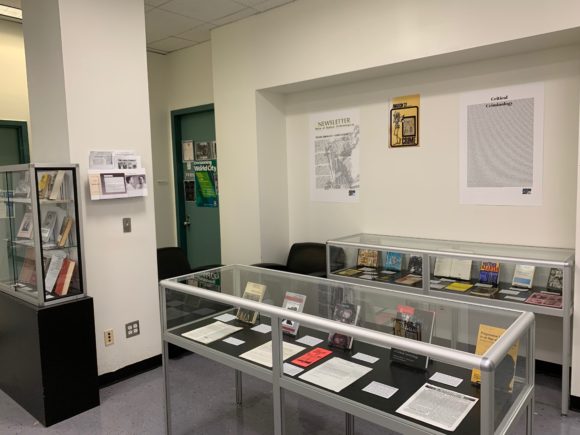
Mooney’s challenge to the new proposals is grounded not only in her work in political social history, but also in her background as a critical criminologist. “There’s a very strong abolitionist line all the way through critical criminology,” she notes, which informs the way the Critical Social History Project has approached critiques of the plan to build new jails.
The CSHP isn’t only focused on documenting mass incarceration in NYC. As the Vice Chair of the American Society of Criminology’s Critical Criminology and Social Justice Division, as well as the archivist, Mooney has been accumulating archival information related to the division and the field’s history of activism. The CSHP’s Preserving Justice component, jointly directed by Mooney and Visiting Scholar Albert de la Tierra, has created an exhibition in the Sociology Department displaying some of the core critical criminology texts. It’s open to any students, faculty or staff who are interested in the history of the field and the work of its important thinkers.
Expanding Research Horizons
Mooney is proud to talk about her team of dedicated researchers, which includes both undergraduate and graduate students. With the help of their diverse experiences and interests, the Critical Social History Project is expanding its remit, from the history of Rikers Island to topics including the history of women’s incarceration, other New York carceral institutions including the Tombs and Sing-Sing, mental illness and incarceration, and more. Together, they are showing the persistence of the problems related to the history of mass incarceration, no matter where in history you begin your research—up to and including the present day.
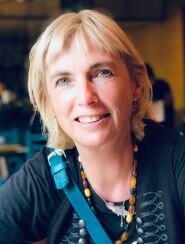 The Critical Social History Project is directed by Jayne Mooney and Albert de la Tierra. Other members are Sara Salman (Victoria University of Wellington), Nick Rodrigo, Jacqui Young, Susan Opotow and Louis Kontos, as well as John Jay students Camilla Broderick, Anna Giannicchi, Tayabi Bibi, Andressa Almeida, Marcela Jorge-Ventura, and Audrey Victor.
The Critical Social History Project is directed by Jayne Mooney and Albert de la Tierra. Other members are Sara Salman (Victoria University of Wellington), Nick Rodrigo, Jacqui Young, Susan Opotow and Louis Kontos, as well as John Jay students Camilla Broderick, Anna Giannicchi, Tayabi Bibi, Andressa Almeida, Marcela Jorge-Ventura, and Audrey Victor.
You can learn more by visiting the Critical and Social History Project’s website.
Denise Thompson is Trying to Make Post-Disaster Rebuilding Better
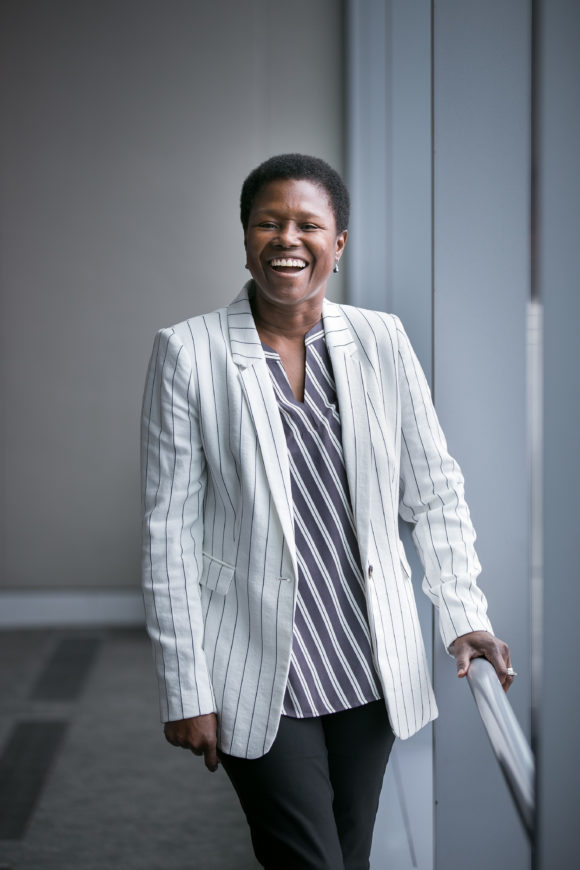 Denise Thompson is an Associate Professor in John Jay College’s Department of Public Management, and an expert on disaster management and risk reduction. Her new book, Disaster Risk Governance: Four Cases from Developing Countries, was published in July 2019 by Routledge. To learn more about where and how she does this work, you can read a profile of Dr. Thompson in this year’s Impact magazine.
Denise Thompson is an Associate Professor in John Jay College’s Department of Public Management, and an expert on disaster management and risk reduction. Her new book, Disaster Risk Governance: Four Cases from Developing Countries, was published in July 2019 by Routledge. To learn more about where and how she does this work, you can read a profile of Dr. Thompson in this year’s Impact magazine.
Read on for an edited interview with Dr. Thompson about her work related to disaster planning and recovery, and how she approached writing a book on such a complex topic:
What factors are most important to consider when planning for storms or natural disasters, whether far in the future or imminent?
Maybe the best way to answer that is to look at the disaster cycle. Mitigation, planning preparedness, response, recovery, reconstruction, and then back to mitigation. Even though I put the phases into discrete components, the cycle is integrated, not discrete. And the steps must always be revised.
Mitigation is essentially putting structural and non-structural elements in place well ahead of a storm. That includes hardening infrastructure as well as putting systems in place to make sure we can respond.
The preparedness phase gets ready for imminent disaster, including by bringing together supplies, people and other resources to respond, and making sure supplies are prepositioned where they’re expected to be needed; organizing transportation and marking routes for evacuation; and more.
Recovery includes the immediate response post-disaster, where communities plan for building or rebuilding; get schools, offices, child care and other systems back up that are required for day-to-day functioning; and bring critical services back on line, like roads, food supplies, water, and the government.
Finally, reconstruction is a process of longer-term rebuilding. Ideally, this includes innovation to ensure communities are “building back better,” and is an extremely integrated, wide-spectrum process that moves toward hardened infrastructure and sustainable processes. This happens after an assessment is done of the damage, and must be integrated into planning.
One example is in the Bahamas. Because they are unable to rebuild exactly the same as before the storm hit, the government is thinking about putting some infrastructure underground, like communication towers, to create some protection from the next storm.
How do you factor in climate change when considering ongoing efforts to prepare for and recover from natural disasters?
Well, what is a disaster? We have to think about that. I was listening to a story on NPR, the bird population of the U.S. shrank by one billion birds – that’s climate change. And even epidemics. Certain bacteria and invasive species thrive in certain temperatures. So it’s a disruption, not only of the human ecosystem, but also of the animal ecosystem.
When we talk about disasters, we tend to talk about natural disasters, but it’s so much bigger. We’re not even talking about man-made disasters, like terrorism or cyberattacks, which could be catastrophic. Those are disasters, too, but man-made.
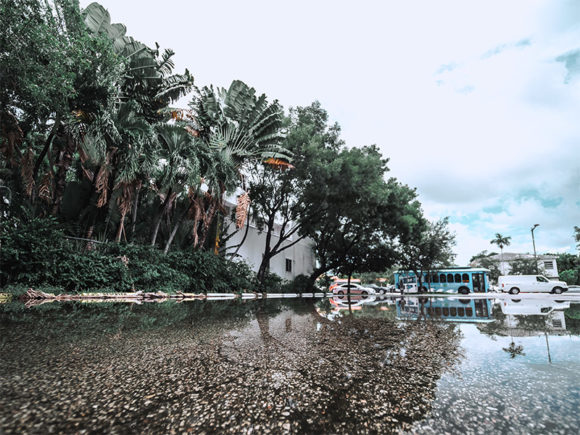
Given the trends in natural disasters associated with climate change (e.g., hurricanes and tropical storms are more frequent, and more frequently of record intensity levels), are there places that are becoming unlivable, or that should be abandoned?
Yes, there are places that should be abandoned. A lot of these countries, their populations are concentrated along the coast, and there are vulnerabilities. Like schools that are flooded in every single storm of course should not have been built where they are.
Are issues of rebuilding and relocation tied in with race and class?
These issues are very tied to rebuilding in many places. You can also look at a place like Flint – race, class and vulnerability are interlinked. Or Newark. Usually, African Americans, Latinos and other minorities are more vulnerable to these disasters. And it’s harder for the poorest communities to recover – the same event has a more drastic impact. The rich have more resources.
In island states, the line is more blurred. The interiors are more rugged, which means most people tend to locate along the coastline, so it’s not as clear-cut an issue as in, say, Hurricane Katrina. But there’s an issue of moral hazard; even knowing that it’s dangerous, people build anyway, knowing that somebody will help them to rebuild. Like the government, or insurance money. So people tend not to bother to plan for disasters.
However, organizations have been exploring insurance, like livelihood protection, for poorer people. For example, the Caribbean Catastrophic Risk Insurance Facility (CCRIF) pools resources from many countries in the region, who pay into this fund. They are disbursed to governments directly, to help pay for rebuilding. Commercial facilities might be getting out of disaster insurance, but others are stepping into that void.
Is there an ideal balance between recovery efforts provided by home governments versus outside aid?
I don’t know if there’s an ideal balance. Governments operate at different levels – national, regional, local, community, household – so we usually say that the government closest to the people should be equipped to help them. But what we find is that often the governments closest to the people are themselves incapacitated by whatever event took place, and they’re not able to help. And if you go one level higher, they may be able to help in some ways but not others, and so on. In cases like those, outside help is needed; the quantity depends on the issue.
Is there a useful role for individual aid?
There’s a useful role, but it’s hard to manage spontaneous volunteers. They may put themselves in harm’s way. Typically we say, go through an entity to help. Most agencies right now want money, because they can best divert it to where it’s needed. That may be potable water, or a sanitary facility, or helping women or children get out of situations where they’re more vulnerable thanks to the disaster. It may be a number of things.
When you talk about disaster planning, mitigation, risk reduction, it’s a big, involved process, and very complex. It’s hard to get a handle on it, but agencies do it. Their effectiveness depends on resources. And no one place has the level of resources needed. That’s why governance systems are important, to bring all these things together – the resources, money, people, institutions, laws, and the formal and informal arrangements that must be made to keep people safe.
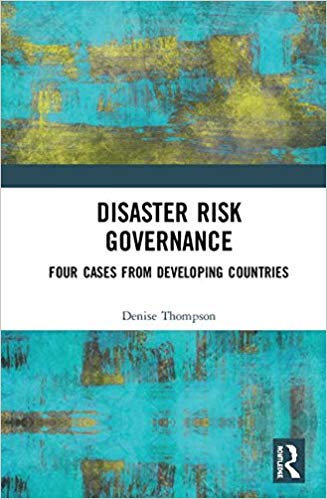 This is obviously a vastly complex topic that touches on every area you can imagine. How do you write a book about that? Is your book more broad, or is it more of a tool?
This is obviously a vastly complex topic that touches on every area you can imagine. How do you write a book about that? Is your book more broad, or is it more of a tool?
The idea for the book came when I was doing a lot of work in the Caribbean and seeing a lot of money being spent, with a minimal return on investment. When the next event came, we were still dealing with the same issues. Activities were happening piecemeal, done by aid agencies, governments, the UN. And preexisting factors, like colonialism, undermined institutions. These were antecedents to what we’re seeing now, but we never could put them together, because we’re always trying to put out fires.
Disaster management systems happen in context of the country, and I realized that countries with weaker governance systems also have weaker disaster management systems. Governance is an umbrella term, comprising all the institutions, systems, actors and processes that come together around disasters.
So what I wanted to do was come up with a number of variables we could use to pinpoint areas we could shore up to improve disaster risk reduction and outcomes. I looked at institutions as a key component in that, like legislation, insurance, security. I also talked about labor policy, networks, economic investment – all these things may not be part of disaster policy, but they support it.
Why did you pick those four specific countries – two in the Caribbean, two in Sub-Saharan Africa – to feature in your book? Did you find some similarities there?
When I came into academia in 2008, there wasn’t much literature on poor countries. And that is not specific to disaster management. The voice was missing. I thought, if I looked at the sub-Sahara and the Caribbean, I would be better able to come up with a governance framework that actually works for developing or poorer countries.
The similarities I picked up are mostly in the institutional and informal aspects. For instance, indigenous peoples from the Caribbean and from Africa were similar in that they had communities with their own laws and customs that may be opposed to planning around disasters. Also, these countries have a legacy of corruption – not all poor countries, some rich countries have higher rates of corruption – but still, government ineffectiveness, government inaccessibility to their populations, these things were comparable. Those cause inefficiencies and waste in the system, they cause people to take longer to recover from disasters. It’s complex and messy.
In the book you have to try to manage the multiple components; you can’t write on everything but you can pick out the salient things. I hope that’s what I was able to do.
Is it disheartening, to see inefficiencies and to see problems getting larger every year, problems that we’ve caused ourselves and failed to find effective solutions to thus far?
Yes, but at the same time, we’re working more closely with communities, and households and individuals, and I think that’s where it has to happen. So while governments create the policies, the infrastructure and the systems, the ecosystem is bigger, with subsystems within it. If you work at the micro level, you can shore up the entire system.
In the Caribbean and in Africa, there are regional agencies that are the real workhorses and innovators – the East African Commission, the African Union, Caribbean Disaster and Emergency Management System, CARICOM. CCRIF, for example, is one of the first in the world to push for countries to pool their resources. Other regions, like Southeast Asia, are doing a similar thing. All of these groups come together to actually build and pilot things.
Gerald Markowitz shines light on corporate bad behavior
Distinguished Professor of History Gerald Markowitz and long-time writing partner David Rosner, a Professor of Sociomedical Sciences at Columbia University, have been researching industrial pollution and contaminants since the early 1970s. Their first jointly-authored book, Deadly Dust: Silicosis and the Politics of Occupational Disease in Twentieth-Century America, explored historical evidence of the lung disease silicosis, which is a hardening of the lungs due to inhaling dust found in sand or rock. Thanks to Deadly Dust, Markowitz and Rosner came to the attention of lawyers bringing workplace safety suits on behalf of construction workers suffering from silicosis, launching a long career of research and expert testimony on occupational disease and toxic substances. In the early 2010s, the duo began an investigation into asbestos and asbestos-related disease.
 Their work turned up hundreds of articles on the dangers of asbestos, now a watchword for poisons that can lurk in our homes, dating from 1898 to the present. Markowitz and Rosner also referred to corporate records and documents made public through court discovery; a more recent project called ToxicDocs is an open-source, online database of more than 15 million pages of documents related to silica, lead, vinyl chloride, and asbestos that were previously not easily accessible.
Their work turned up hundreds of articles on the dangers of asbestos, now a watchword for poisons that can lurk in our homes, dating from 1898 to the present. Markowitz and Rosner also referred to corporate records and documents made public through court discovery; a more recent project called ToxicDocs is an open-source, online database of more than 15 million pages of documents related to silica, lead, vinyl chloride, and asbestos that were previously not easily accessible.
In June, Markowitz’s expertise was featured prominently in the American Journal of Public Health, in an article detailing a representative episode in the history of the struggle between industry and regulators. In “Nondetected: The Politics of Measurement of Asbestos in Talc, 1971-1976,” Markowitz and his co-authors describe the years-long interval between the talc industry’s acknowledgement that asbestos is toxic and their taking action to protect consumers, and the subsequent conflict between the Conflict, Toiletry, and Fragrance Association (CTFA) and the U.S. Food and Drug Administration (FDA) over regulating appropriate methods for detecting asbestos contamination in consumer talc products and setting safety standards.
The focus of the article, said Professor Markowitz, “was that the cosmetic industry, I think very consciously, used this concept of nondetected, which we as consumers think of as ‘no asbestos in the talc,’ but nondetected could mean enough asbestos in the talc to cause disease. And that’s what the industry understood, but consumers did not.”
The CTFA’s 1970s victory in lowering detection standards and advocating for self-regulation is still bearing fruit; recent lawsuits against talcum powder manufacturers allege the household product causes cancer due to asbestos contamination. As recently as 2018, courts awarded plaintiffs record damages of close to $4.7 billion in a case against manufacturers, capturing public attention.
We sat down with Professor Markowitz to talk about his work researching industrial poisons and about corporate responsibility to the consumer in today’s world. Read on to hear from Professor Gerald Markowitz in his own words.
Why do you believe that talc product manufacturers continued to accept a lower standard for asbestos eradication despite known health dangers, not to mention the risks of litigation?
When they developed this idea, in the 1970s, their basic argument was that there should be as little federal regulation as possible. [The CTFA] was able to lobby the federal FDA that the technologies that the FDA was proposing were not able to be completely accurate, would give too many false positives, would take a long time to do, and would be costly. So they proposed their own method. And they’re able to eventually convince the FDA that it should not be federal but industry regulation.
But what they admit privately is that their method, which is not as demanding as the FDA’s proposed method, was not necessarily accurate and was not necessarily consistent. So to a certain extent, they were really able to forestall regulation by claiming that they could do as good a job [of detecting asbestos in talc products], even though they themselves admitted that they could not do as good a job. And by the very nature of their method, they were going to uncover much less asbestos than the FDA’s method was capable of uncovering.
Do you think there’s something special about the current moment that made this article of particular relevance?
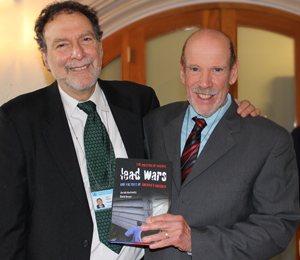
I think it was the variety of ways that deregulation has had an impact on the health and welfare of people in the United States and other parts of the world. To the extent that these articles could help to call attention to that happening, they are important. The advantage of history is that we are able to really see the process unfold in a kind of detail that we don’t necessarily have in observing regulatory of anti-regulatory actions taking place at the moment we’re living in. That level of detail I think is instructive in terms of being able to understand how similar things could be happening today.
Would you like to see this history galvanize some kind of action?
The most important thing that can happen is that people really have to take politics seriously. The United States has a long history of mass movements really demanding and achieving fundamental reforms. Just going back to the 1960s, the demand for civil rights, the efforts of people to get voting rights for African Americans, that didn’t happen simply because Congress decided to pass a law; people were demanding it in mass actions. These are really instructive in terms of what can happen today, and even what is happening today.
Pieces accompanying your article in the AJPH, such as the one by former Assistant Secretary of Labor for the Occupational Safety and Health Administration David Michaels, suggest that corporate influence is getting stronger, to the detriment of consumer and public health. The current administration has loosened or degraded regulatory standards for a variety of products — should we expect more legal battles down the line?
Yes, absolutely. Since the 1970s there has been a very sustained effort by many businesses to oppose regulation, and you get the classic statement by Ronald Reagan, when he said that ‘government isn’t the solution, government is the problem.’ I think the legacy of that, of the push for deregulation as a means of stimulating the economy and freeing business to innovate and all of those kinds of ideas, I think the legacy of that is going to be a variety of problems, not only in consumer products but in environmental damage. It’s going to be for workers, for consumers, for people living in communities where toxic substances are going to be released, we’re going to be suffering those consequences, and the unfortunate thing is that it’s only going to be remedied in retrospect.
And to add one other element, we know that the burden, especially of environmental pollution, toxic waste, global warming, is going to affect poor communities and communities of color to a much great extent than richer communities. At a college emphasizing social justice, this becomes an even more vital issue.
Are there other consumer products known to include dangerous adulterants that are similarly being ‘underregulated?’
BPA [bisphenol A, a chemical used to make certain plastics since the 1960s] is one example; a lot of household cleaners and flame retardants are another one. We’ve discovered that flame retardants are extremely dangerous to people, and that people have them in their bodies. Formaldehyde is another one; there was a scandal about formaldehyde in temporary housing given to people after Katrina, that was unsafe.
There are lots of things we have clues about, but the real scandal is that chemicals are being produced and we’re using them in very large quantities, that have never been tested. And in the United States we have this philosophy, innocent until proven guilty. It’s the same philosophy with chemicals — they are innocent until proven guilty. The Europeans have a system, chemicals can’t be introduced until they’re proven safe. It’s a basic difference in philosophy that companies need to prove that something is safe before they can experiment on us and ensure it doesn’t cause cancer. But in the United States they say that if it does cause cancer, we’ll take it off the market, but that’s very difficult to prove and you’ve done the damage already.
You note in your article that talc researchers were disappointed when their work became known to the industry, but that ‘nothing was done until the results became public.’ Do you think it remains true in cases of corporate wrongdoing that nothing is done until the public finds out all the information?
In the 1970s, there was this wonderful act passed called the Freedom of Information Act (FOIA). The fundamental principle behind that was that if you shine the light of publicity and information and people have that, then they have the ability to act in their own interests. One contribution that historians can make is, using the older historical records, we can cast a light on activities and attitudes and actions that permit people to see what is going on and demand change.
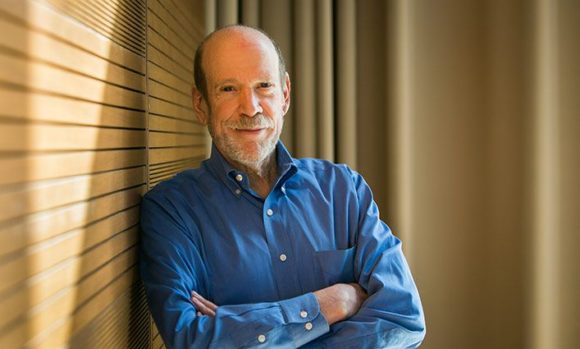
Gerald Markowitz is a Distinguished Professor of History in the Interdisciplinary Studies Department at John Jay College and the Graduate Center of CUNY. His research focuses on the history of public health in the 20th century, environmental health, and occupational safety and health. He has authored a number of books, most recently Lead Wars: The Politics of Science and the Fate of America’s Children, also in cooperation with David Rosner.
John Jay Scholars on the News – Vaccines and the Flu

It’s winter, which we sometimes call “flu season.” In fact, “you can catch influenza at any time during the year if exposed to the virus, and its severity is the same regardless of when you get sick,” says Edgardo Sanabria-Valentín. We don’t fully know the answer to why influenza is more common during the colder months. According to Nathan Lents, “The virus is viable for a longer time in cold air, and spreads more readily in dry air. Another reason that may contribute is that winter air dries our mucus membranes, which makes them less effective at preventing viral entry. We also tend to spend more time indoors with closed windows and recirculated air.”
A somber anniversary
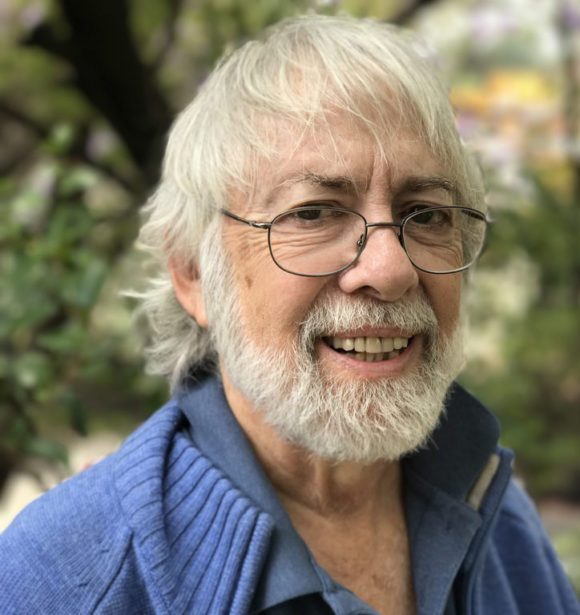
The 2018 flu season was also the 100th anniversary of the infamous global influenza pandemic, a year when more
than 500 million people around the world are estimated to have died from flu. Of that number, 675,000 fatalities came from the United States, with roughly 20,000 from New York City alone. According to Mike Wallace, in his 2018 book Greater Gotham, more Gothamites died of disease in the city than died during World War I; the ongoing war effort actually impaired New York’s efforts to fight the flu, by concentrating soldiers in training camps where disease could spread and by taking much-needed medical personnel away from home to establish medical camps near the battlefields in Europe.
Despite the high numbers of fatalities at home, New York of 1918 had a lower death rate than other major cities (4.7 deaths per 1,000 residents, as compared to Boston’s rate of 6.5 and Philadelphia’s of 7.3). This was attributed by Health Commissioner Royal Copeland to New York’s long history of public health work, and particularly the alleviation of unhealthy conditions around the city at the turn of the 20th century.
Vaccines and you
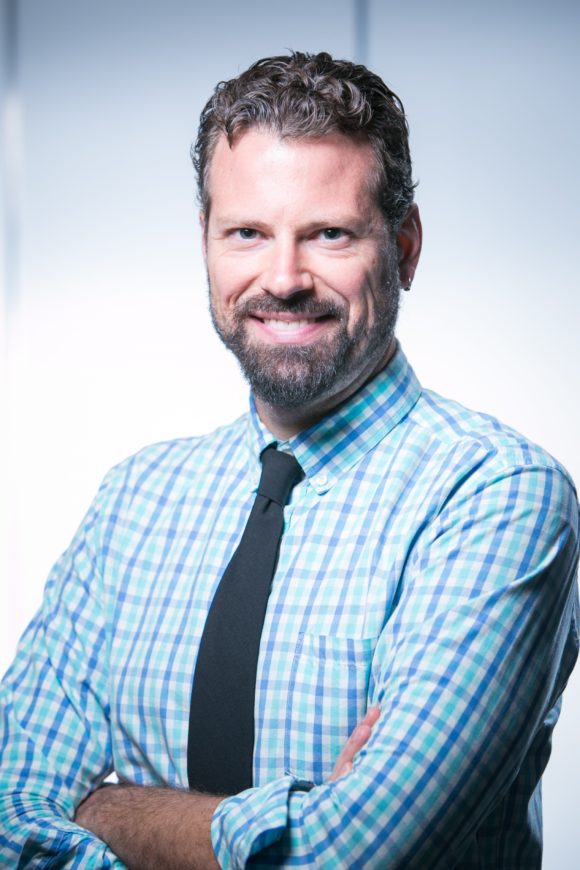
Today, scientific and public health efforts have brought some protection from a repeat of 1918 in the form of vaccines. In the case of the flu, explains Dr. Lents, “Each year’s vaccine is targeted toward the three to four strains that appear to be spreading the most rapidly. The injected vaccine contains killed viruses [from those strains], while the nasal spray contains live but weakened viruses. In both cases, the large dose of viral particles elicits a strong immune reaction from our bodies, including the production of antibodies that can stick around for years or even decades. The second time we are exposed to the same virus, it only takes a day or two to mount the same level of immune response. This ‘priming’ gives the immune system enough of a head start that it usually prevents the infection from ever taking hold.”
Because the influenza virus is so good at mutating from year to year, “no vaccine is 100% perfect, and getting the flu shot will never protect you against 100% of all flu strains,” says Dr. Sanabria-Valentín. But the vaccine will “significantly decrease the risk of getting sick, and will decrease the severity and length of infection, and decrease the chance that you get other people sick” if you do contract the virus.
Vaccinating also helps to protect those around you in other ways, namely by contributing to “herd immunity.” “Some people cannot be vaccinated because they are too young, too old, immune-compromised, or battling other kinds of infections,” says Dr. Lents. When the percentage of people in a population are effectively immunized, it helps to prevent the spread of disease to those who were unable to receive the vaccine. But when the percentage of vaccinated people falls because individuals who otherwise could be immunized choose not to be, it puts vulnerable populations at risk.
Conquering vaccine hesitancy
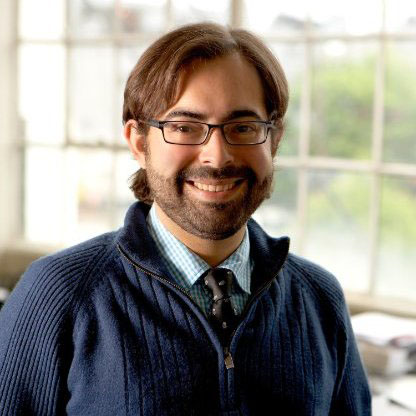
“Controversies about vaccinations have been out there since we adopted this preventative measure almost 100 years ago,” says Dr. Sanabria-Valentín. “There are a lot of myths about vaccinations which are peddled by conspiracy theorists trying to sell you something or by people who might have good intentions but got swindled by ill-intentioned people trying to make a fast buck. One of the most popular ones is that vaccines can cause autism in children. This claim was first made in a study that was demonstrated (by many groups) to be fraudulent; no direct relationship between receiving vaccinations and autism has been found. There is overwhelming consensus among scientists and physicians that vaccines are safe and effective even though, like most medical treatments, in very rare cases they can cause side effects and in even rarer instances can cause serious unintended health problems. There is overwhelming evidence that vaccination has helped not just individuals, but humankind.” Although diseases like smallpox, polio and the measles were all but eliminated by vaccine technology, skepticism about immunization–which many attribute to the rise of social media–has caused some long-gone diseases to stage a comeback.
Dr. Lents stated that “in 2017, 80,000 people died of influenza, the highest number in 40 years. If more healthy people had been vaccinated, that number could have been much less. Each person that decides not to vaccinate adds a little bit of risk to the entire population.” This dynamic played out in October 2018, when measles–which was declared eliminated in the US in 2000–broke out in Williamsburg, Brooklyn. The New York City Department of Health confirmed 42 cases in Williamsburg and Bensonhurst as of mid-December, and is currently barring un-immunized students from attending local schools. And according to The Guardian, Europe is also experiencing a surge in vaccine hesitancy and a corresponding growth in the numbers of new measles cases; Europe will see more than 60,000 new cases this year and 72 deaths, the highest number this century.
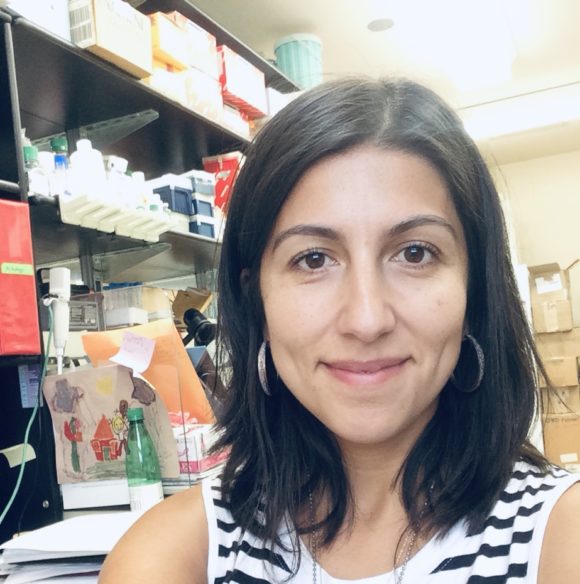
It is generally agreed that fears about vaccine side-effects are overblown, and contradicted by scientific consensus. “Vaccines are constantly monitored and modified as circumstances dictate. The FDA does not approve a vaccine unless initial trials indicate the benefits clearly outweigh the risks. In response to vaccine safety concerns today, healthcare providers have to give vaccine information sheets to recipients clearly describing the risks and benefits of the vaccine. And finally, vaccines are subject to particularly high safety standards because, unlike other health treatments, they are given as preventive measures to protect healthy people,” explains Dr. Evelyn Aranda Jaque. “Although vaccination is not 100% effective, studies on flu vaccination programs have shown that people who get vaccinated are less likely to be seriously ill or die in comparison with those who do not vaccinate. We must consider that the widespread use of vaccines for life-threatening diseases in the United States has led to a dramatic decrease in their incidence.”
Evelyn Aranda Jaque is a substitute Associate Professor at John Jay College, where she teaches classes including Immunology and Microbiology. She received her Ph.D. from the Physiology Department at Pontificia Universidad Católica de Chile. Dr. Aranda Jaque’s research since her doctorate days has largely focused on the role of angiogenesis (the formation of new blood vessels) in tumor progression.
Nathan Lents is a Professor of Biology and Director of the Honors Program and Macaulay Honors College at John Jay College. He holds a Ph.D. in human physiology and postdoctoral training in computational biology from NYU. In addition to his laboratory research, Dr. Lents writes popular science articles, blog and books. His most recent book is Human Errors: A Panorama of Our Glitches from Pointless Bones to Broken Genes.
Edgardo Sanabria-Valentín is the Associate Program Director of John Jay College’s Program for Research Initiatives in Science and Math (PRISM) as well as the college’s Pre-Health Careers Advisor. He holds a Ph.D. from NYU-School of Medicine, and spent three years working in the biotechnology industry. Dr. Sanabria-Valentín is the recipient of the ESCMID Young Scientist Award (2007), a Leadership-Alliance Schering Plough Graduate Fellowship (2006), and the NBHS-Frank G. Brooks Award for Excellence in Student Research (2001).
Mike Wallace is a Distinguished Professor of History at John Jay College and author of Greater Gotham: A History of New York City from 1898 to 1919. Dr. Wallace is also the co-author of Pulitzer Prize-winning Gotham: A History of New York City to 1898 and the founder of the Gotham Center for New York City History at the CUNY Graduate School. He received his undergraduate and graduate degrees from Columbia University.
John Jay Scholars on the News – The Opioid Epidemic
The terms “opioid crisis” or “opioid epidemic” have come to be used as political buzzwords, but what does it really mean to say that America is in the grip of an “opioid epidemic”? According to the Centers for Disease Control, more than 72,000 people in the United States died as the result of an overdose in 2017, and approximately 30,000 of these were from the use of fentanyl and other synthetic opioids — that comes to around 100 per day! Fentanyl, a powerful opioid designed to treat severe and chronic pain, is roughly 100 times stronger than morphine, and is currently being used to adulterate other abused substances, making these overdoses likely to increase.
From the perspectives of policy, policing, and public health, this rash of deaths is worthy of further consideration. John Jay College scholars from across disciplines and research areas tell us what they think has contributed to the trend of deaths from opioid abuse and what approaches may be best suited to tackling the problem.

What is different about the pattern of drug abuse we are seeing today that has caused it to be referred to as the “opioid epidemic”?
Jeff Coots (Director, From Punishment to Public Health Initiative): One main reason for concern around opioids today is that they are simply more deadly than the other drugs we consume. However, the rates of overall illicit drug use are actually quite steady — especially when we remove cannabis consumption from the conversation. The latest results from the National Survey on Drug Use and Health show steady illicit drug consumption from 2002-2013 at about 4%, with those aged 18-25 using a bit more than twice the rate of other age groups. We do see a slight increase in heroin consumption as prescription opioids become less available, but this doesn’t impact the overall rates of illicit consumption.
Heidi Hoefinger (Visiting Scholar, Anthropology): The situation is considered an “opioid epidemic” due to the size of the problem now, and its potential for growth. But this issue is also getting more attention than past drug “epidemics” because it’s a white, middle-class problem, particularly here in New York, with Staten Island and Long Island having some of the highest rates of use and overdose. There has definitely been a “softer” approach to this epidemic as opposed to the “crack epidemic” of the 1980s, which saw much more aggressive law and order efforts resulting in mass incarceration. Many poor people of color are still sitting in prison because of that heavy-handed approach. It’s definitely a good thing that opioid addiction is currently being viewed as more of a public health issue, but it’s extremely problematic that Black and Latinx folks continue to suffer the consequences of racist applications of drug policy.
Can you point to a few of the key factors that you believe are to blame for the current public health crisis?
Jeff: The origins of the current crisis began with the marketing of OxyContin as a non-addictive painkiller in the 1990s followed by the introduction of “pain” as the fifth vital sign in 2001. This led to higher rates of opioid prescription drug use and related overdose fatalities in the early 2000s. The second “wave” of opioid-related deaths are attributed to increased heroin consumption starting in about 2010, following a crackdown on prescription opioid distribution — consumers simply switched to the cheaper and more available opioid. The third wave is attributed to the increased presence of synthetic opioids like fentanyl in the market, starting in about 2013. These synthetics can be much more potent and make it difficult for users to control their dosage, leading to more overdoses.
Marta Concheiro-Guisan (Assistant Professor, Forensic Toxicology): Other socioeconomic factors like unemployment and economically-depressed areas should also be considered in trying to understand the whole problem and the populations most affected by it.
Heidi: The biggest drivers are probably Big Pharma and corporate greed because pharmaceutical companies were deceptive about the true effects of opioids, claiming they were non-habit inducing. They also offered incentives to doctors for prescribing, which led doctors to over-prescribe opioids instead of safer alternatives. Insurance companies typically cover opioids as opposed to alternative therapies, so they’ve played a role in this as well. It’s encouraging to see that NYC (among other cities) is suing some major pharmaceutical companies for their role in the epidemic, but there still needs to be more accountability on the part of Big Pharma.
What are the implications for American society should this systemic issue continue unabated?
Jeff: I think we are having a really important debate in the country right now about how our collective response to drug use differs along racial lines. Drug Policy Alliance and Columbia University co-hosted a conference in 2016 to highlight how the white opioid user who may have started on prescription drugs and then switched to heroin is considered a victim of circumstance and provided overdose treatment, rehabilitation and a call for compassionate public health responses. Meanwhile, black and brown heroin addicts who may not have had health insurance and access to prescription drugs tend to get jail cells, court-mandated treatment and moralizing “just say no” campaigns grounded in personal responsibility. Obviously, the the shift towards funding treatment and reducing criminal justice involvement is welcome, but the carnage reaped in the previous regime of zero tolerance and deterrence must be acknowledged and reconciled at the local and national levels.
Heidi: It has been compared to HIV in some arenas, in that it’s affecting a marginalized and stigmatized population (e.g., drug users) but it’s not getting the same attention and funding it deserves. The numbers of overdoses and deaths will likely continue to rise as long as the stigma exists, and as long as pharmaceutical companies continue to operate unchecked, as long as doctors continue over-prescribing, as long as insurance companies don’t see the value in covering alternative treatments, and as long as harm reduction remains undervalued and underfunded.
Marta: The biggest impact on American society is, of course, the tragedy of the families affected by this unprecedented health issue, and the loss of so many young people’s lives. The Centers for Disease Control and Prevention estimates that the total “economic burden” of current opioid misuse alone in the United States is $78.5 billion per year, including the costs of healthcare, lost productivity, addiction treatment, and criminal justice involvement.
 The Opioid Crisis Response Act of 2018 was recently signed into law. It authorizes new funding and grants to address the crisis, advances initiatives to raise awareness and to get more first responders to carry naloxone, and drives increased coordination among federal agencies to stop drugs like fentanyl at the border, among other measures. Do you think this bill takes the right approach to dealing with the crisis? Does it go far enough?
The Opioid Crisis Response Act of 2018 was recently signed into law. It authorizes new funding and grants to address the crisis, advances initiatives to raise awareness and to get more first responders to carry naloxone, and drives increased coordination among federal agencies to stop drugs like fentanyl at the border, among other measures. Do you think this bill takes the right approach to dealing with the crisis? Does it go far enough?
Heidi: Many of these are welcome changes, and are actually similar to Obama’s opioid plan from 2016, but the problem is that this plan doesn’t allocate much more funding — which is needed. If this is a serious public health problem, it should receive funding and attention similar to that provided for HIV/AIDS or Ebola, as well as a similarly concerted, multi-organizational response. But addiction is still a very stigmatized condition, and not taken as seriously as it should be. People with addictions are still often blamed for their own demise, and not viewed in the same light as people with other chronic illnesses.
Marta: From my point of view, one critical element in addressing this crisis is the treatment of addiction as a health issue rather than as a stigma, and a drastic improvement of current services and their accessibility. Another important aspect is education for the general population and among professionals such as medical doctors. More funds are also necessary for the forensic sciences to develop a clearer picture of the current crisis, to know all the opioids that are involved, to monitor future crises, and to research addiction.
Jeff: We need to invest heavily in reducing demand and mitigating the risks associated with consumption, rather than focus on interrupting supply. Efforts to control access to drugs have failed for over a century. In reducing demand, we need to do a better job of addressing pain and trauma, take a hard look at our overreliance on pharmaceuticals and reduce the number of people who become addicted in the first place. In working with those already experiencing opioid dependence, we need to provide competent and evidence-based care including Medication Assisted Treatment (MAT), which is the gold standard for treating those with opioid disorders. In terms of mitigating risks, increased naloxone access is crucial, but increased use of other Harm Reduction strategies is needed as well.
What do you believe is the best way to address this epidemic?
Marta: This epidemic has to be addressed with a multidisciplinary approach, as indicated by the National Institute on Drug Abuse (NIDA) and other governmental agencies. Promoting the use of naloxone, the improvement in the accessibility of medical assistance and addiction treatments, the expansion of prevention programs in schools and for the general public, and increasing funds for the forensic sciences and addiction research are among what I consider the priority areas.
Jeff: The best way to reduce the impact of opioid overdose fatalities is to focus on saving the lives of those who choose to consume opioids. This strategy, more commonly known as Harm Reduction, focuses on reducing the negative side effects associated with illicit drug use, rather than punishing and/or moralizing at those who engage in use. These strategies include needle exchange programs, peer-based education, MAT programs, and safe consumption facilities, all of which treat those who consume illicit drugs as human beings worthy of compassion and competent medical care for their medical issues. As I noted earlier, our previous strategy of interrupting supply and punishing consumption — i.e., the War on Drugs — has not reduced the rates at which our citizens consume illicit drugs. It has, however, made that consumption more dangerous and more damaging for those communities with higher rates of use and criminal justice presence.
Heidi: Societal attitudes towards drug users and people with addictions need to change. For this to happen, people need to understand that drug use has always been a part of human history, drug users are not inherently bad people, and people will continue to want to alter their consciousness or treat pain through drug use. People also need to understand the racialized history of drug policy in this country, and that laws against drug use (which are unevenly applied across race and class) were implemented for racial, class and economic reasons (and because of who was using the drugs), not necessarily because of the harmful effects of the drugs. When people are exposed to this history, and these realities, then perhaps stigma against drug use will change, and people affected by the current epidemic will get the proper help that they need.
In addition, we need more funding for harm reduction and evidence-based drug education programs in middle schools, high schools, college and universities. Not the “Just Say No” type, because those don’t work. But the kind where students can ask open, honest questions and get factual, evidence-based, non-biased, non-moralistic responses so they can know the potential effects and risks and make more informed decisions. And there also needs to be more support for medication-assisted treatment programs (like methadone and buprenorphine), as well as harm reduction programs like DanceSafeNYC that provides factual, evidence-based drug education and drug checking kits at music festivals and events. These types of initiatives take harm reduction beyond syringe exchange programs and make them more accessible to a diverse range of young people, which ultimately saves lives, and may start to turn the tide of this epidemic.
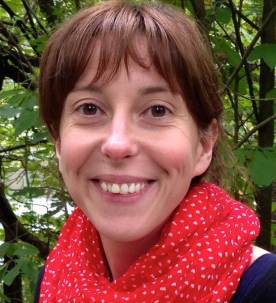
Marta Concheiro-Guisan, Ph.D., is Assistant Professor of Forensic Toxicology at John Jay College. She has experience in the development and validation of new analytical methods and toxicological analysis of different types of specimens–including plasma, blood, urine, oral fluid, hair, sweat and other tissues. She has participated in Drugs and Driving Research Projects, including the ROSITA (Road Site Testing Assessment) and DRUID (Driving Under the Influence of Drugs) European Projects, to study alternative matrices to detect drug impairment, and in clinical protocols involving different types of drugs of abuse and drug exposure during pregnancy. Dr. Concheiro-Guisan has more than 40 publications in peer-reviewed journals.
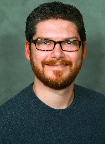 Jeff Coots, JD, MPH, serves as the Director of the From Punishment to Public Health (P2PH) initiative based at John Jay College. Prior to joining P2PH, Mr. Coots completed a joint Juris Doctor/Masters of Public Health degree program at Northeastern University School of Law and Tufts University School of Medicine, where he focused his studies on the social justice and health impacts of mass incarceration. While in Boston, he served as an Albert Schweitzer Fellow and delivered dialogue-based “Health Reentry” workshops to introduce strategies for working in collaboration with a primary care provider to prevent new infections and mitigate the effects of chronic disease.
Jeff Coots, JD, MPH, serves as the Director of the From Punishment to Public Health (P2PH) initiative based at John Jay College. Prior to joining P2PH, Mr. Coots completed a joint Juris Doctor/Masters of Public Health degree program at Northeastern University School of Law and Tufts University School of Medicine, where he focused his studies on the social justice and health impacts of mass incarceration. While in Boston, he served as an Albert Schweitzer Fellow and delivered dialogue-based “Health Reentry” workshops to introduce strategies for working in collaboration with a primary care provider to prevent new infections and mitigate the effects of chronic disease.
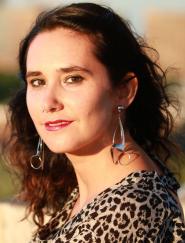 Heidi Hoefinger, Ph.D., is a Visiting Scholar in John Jay College’s anthropology department, where she teaches a course on gender and sexuality within the social and cultural contexts that exist in an increasingly integrated but unequal global world. She also works on a large European Research Council (ERC) project led by Kingston University in London, in which she is the New York-based ethnographer looking at anti-trafficking efforts in New York City, and their effect on sex work/ers and migration policy. Among her areas of interdisciplinary research interest are gender and sexuality, globalism and transnationalism, and drug use.
Heidi Hoefinger, Ph.D., is a Visiting Scholar in John Jay College’s anthropology department, where she teaches a course on gender and sexuality within the social and cultural contexts that exist in an increasingly integrated but unequal global world. She also works on a large European Research Council (ERC) project led by Kingston University in London, in which she is the New York-based ethnographer looking at anti-trafficking efforts in New York City, and their effect on sex work/ers and migration policy. Among her areas of interdisciplinary research interest are gender and sexuality, globalism and transnationalism, and drug use.
John Jay Scholars on the News — Re-enfranchising the Justice-Involved
In mid-April, New York Governor Andrew Cuomo signed an executive order re-enfranchising paroled persons with felony convictions. The move sidestepped the Republican-controlled state legislature and does not change state law; instead, the governor intends to issue pardons for individuals convicted of felonies and currently on parole in New York – up to 35,000 individuals – as well as pardoning any new felons entering the parole system each month. The order has been criticized on all sides, both for overstepping the bounds of gubernatorial power as well as for not going far enough to address criminal justice and electoral reform.
We asked some of our own faculty and staff what they thought of the move, and whether it might be a harbinger of further voting reform for the justice-involved, both in New York State and across the United States.
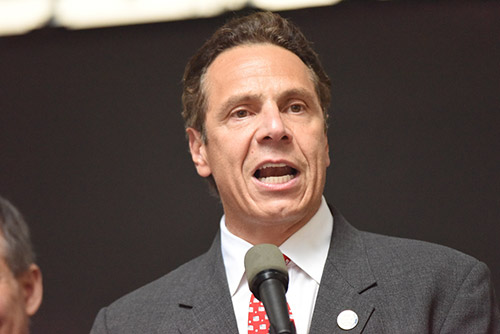
Gloria Browne-Marshall (Associate Professor, Constitutional Law): Only about seven nations disenfranchise formerly incarcerated citizens.
Alison Wilkey (Director of Public Policy, Prisoner Reentry Institute): The impacts of disenfranchisement on communities have intensified with mass incarceration. In 2016, the Sentencing Project estimated 6.1 million people were disenfranchised as the result of a felony conviction [in the United States].
Why is re-enfranchisement such a significant step? What do you believe the impact will be?
Dr. Baz Dreisinger (Professor, English): Denying those with justice involvement the right to vote is an unparalleled injustice. It’s about time that this be addressed.
Gloria: To withhold the right to vote due to a felony conviction is called a Civil Death. Re-enfranchisement is necessary for re-entry into society. To be placed outside of one’s community is the intended punishment. Once completed, the punished must be re-admitted into society as full members. This includes participation in the political process. All voting rights should be given once imprisonment has ended.
Alison: The right to vote is both a fundamental right and an important responsibility. Voting is the cornerstone of democracy and ensures that citizens are able to play a role in shaping our government. Re-enfranchising individuals on parole in New York State is a significant step towards ensuring a more participatory democracy and equitable society for all.
Governor Cuomo’s executive order will have significant impact on the re-entry process [i.e., individuals returning to society post-incarceration]. Successful re-entry often depends on opportunities for meaningful community engagement. Voting will ensure that individuals on parole have the opportunity to exercise their political voice and formally contribute to their communities.
Re-enfranchisement will also have a generational impact. According to the Urban Institute, 2.7 million children have an incarcerated parent, and more than 5 million children have had a parent in prison or jail at some point during their lifetimes. In many states, formerly incarcerated individuals are disenfranchised even post-sentence, after parole or probation. When parents or older family members are unable to participate in elections, children and younger generations lose their most direct model for civic engagement. Granting individuals on parole the right to vote will ensure that the children and family members of (formerly-) incarcerated individuals more often become involved in the political process.
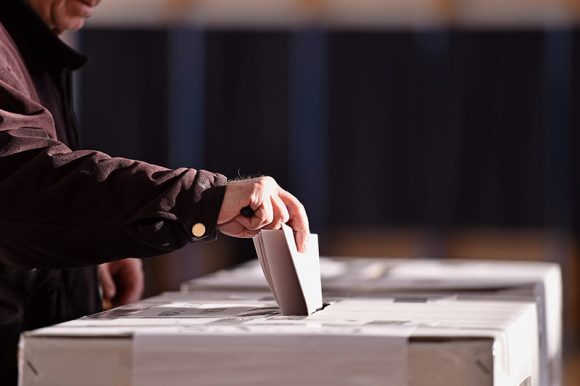
Dr. Heath Brown (Associate Professor, Public Policy): Voting is one of the most important ways to participate in the democracy, so restoring voting rights is a meaningful way to encourage full participation and a truly just society. The impact of restoring voting rights will depend on actual registration and turnout, however. Unfortunately we do not make it very easy to register, even for those who are fully eligible. Voting is also not always easy, especially for those working long hours. Lowering all barriers to full democratic participation would be the best guarantee that all voices are heard on Election Day.
Do you believe there should be any qualifications or exceptions to re-enfranchising the formerly-incarcerated population?
Alison: PRI firmly believes that all individuals, regardless of their involvement in the justice system, should have the right to vote. There should be no moral or character requirement for enfranchisement.
What do you believe is the likelihood or rate at which this population might exercise their right to vote, if re-enfranchised?
Gloria: The Supreme Court is deciding a current case based on whether citizens have a right not to vote. The formerly convicted have a right not to vote. It’s their decision how and when they choose to exercise this and any other Constitutional right.
Alison: Re-enfranchisement will only be as successful as the attendant voter education effort, which needs to be proactive and accessible. Government agencies, community-based organizations, community leaders and grassroots groups have an obligation to communicate with individuals on parole to ensure robust voter registration and subsequent voter turnout.
Heath: Voting is a habit, so those who voted prior to incarceration likely will return to regular voting quickly. I worry more about those who were incarcerated as teens, having never voted. It is for these citizens that a thorough program of civic learning would be most beneficial. I hope colleges, like ours, and civic groups can come together to develop programs to encourage voting and teach about democratic practices. We shouldn’t accept voting as a right that only those citizens who feel most informed and comfortable do. Re-entry programs should add democratic participation to their already Herculean efforts. Under President Mason’s leadership, I hope the John Jay community will lead this movement to promote full voting participation.
Do you think this move by Governor Cuomo has the potential to influence or spread to other states? If so, which ones?
Heath: Substantial political science research shows that innovative state policies spread and diffuse to other states. When it comes to voting issues, partisan conflict will surely factor into whether other states look to New York and this recent decision.
Gloria: Hopefully, New York will influence New Jersey and other states with long parole and probation periods that leave some formerly incarcerated persons in a “civilly dead” limbo for nearly a decade.
Baz: Since this is an archaic, discriminatory and utterly ridiculous law, it seems inevitable that it will collapse nationwide.
Alison: Gov. Cuomo’s executive order represents a wider trend in criminal justice reform that addresses the impact of disenfranchisement. Currently, only Maine and Vermont have granted incarcerated individuals the right to vote. New Jersey is considering similar legislation, and Virginia Governor McAuliffe signed an executive order similar to Gov. Cuomo [in April 2016]. Moreover, the People’s Policy Project report Full Human Beings notes that “several pieces of legislation are being advanced to enfranchise every citizen silenced through incarceration” at both the state and federal levels.

Are you for extending the vote to currently incarcerated individuals as well? If so, should they be registered to vote in their home districts or the districts in which they are incarcerated?
Alison: PRI believes in giving incarcerated individuals the right to vote in their home communities. Participating in the electoral process in their home communities will help incarcerated individuals maintain a connection with their communities, promote civic engagement, and ensure that the wider communities’ needs are addressed.
Disenfranchisement of incarcerated individuals disproportionately affects black and Latinx urban communities, who account for 60% of the prison population but only 27% of the total population. While incarcerated individuals do not have the right to vote in New York, the state draws on census data to draw electoral districts, which counts these individuals as residents of the prison location, not at their home address. The Prison Policy Initiative notes that the majority of New York State’s prisons are built in white, rural communities, which results in the transfer of a “predominantly of-color, non-voting population to upstate prisons, where it is counted as part of the population base for state legislative redistricting, [and] artificially enhances the representation afforded to predominantly white, rural legislative districts.” As the People’s Policy Project report Full Human Beings points out, as a result of prison gerrymandering, “the collective concerns of urban communities of color then go unaddressed.”
Re-enfranchising incarcerated individuals will therefore impact local and national policy on issues that have a direct impact on communities with high rates of incarceration.
Gloria: Voting qualifications are determined by the states pursuant to the US Constitution. Good conduct has been considered a qualification for voting since the colonial era. So it would be difficult for states to allow the incarcerated to vote based on the conduct qualification, political expediency and distribution of power. With over 2 million incarcerated, the prisoner vote would greatly impact the political landscape. If the incarcerated could vote, then should they be able to run for office?

Alison Wilkey is Director of Public Policy at John Jay College’s Prisoner Reentry Institute. Alison joined the Prisoner Reentry Institute as the Policy Director in December 2015. Prior to joining PRI, she worked at Youth Represent as the Director of Policy and Legal Services, and as a staff attorney in the Criminal Defense Practice of the Legal Aid Society in Manhattan. Ms. Wilkey served on the Broad of Directors of the New York County Lawyers’ Association, serving on the Justice Center Advisory Board and numerous other committees. She sat on the Criminal Courts Committee and the Corrections and Community Reentry Committee of the New York City Bar Association. Ms. Wilkey is a graduate of Columbia Law School.
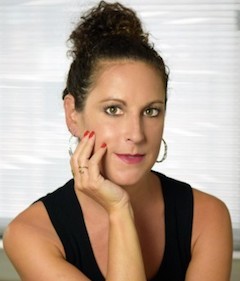 Dr. Baz Dreisinger is Professor of English at John Jay College. Dr. Dreisinger works at the intersection of race, crime, culture and justice. At John Jay she is the founding Academic Director of the college’s Prison-to-College Pipeline program, which offers college courses and re-entry planning to incarcerated men at Otisville Correctional Facility, and broadly works to increase access to higher education for incarcerated and formerly incarcerated individuals. Her most recent book, published in 2016, is Incarceration Nations: A Journey to Justice in Prisons Around the World.
Dr. Baz Dreisinger is Professor of English at John Jay College. Dr. Dreisinger works at the intersection of race, crime, culture and justice. At John Jay she is the founding Academic Director of the college’s Prison-to-College Pipeline program, which offers college courses and re-entry planning to incarcerated men at Otisville Correctional Facility, and broadly works to increase access to higher education for incarcerated and formerly incarcerated individuals. Her most recent book, published in 2016, is Incarceration Nations: A Journey to Justice in Prisons Around the World.
 Gloria Browne-Marshall is an Associate Professor of Constitutional Law at John Jay College. Professor Browne-Marshall teaches classes in Constitutional Law, Race and the Law, Evidence, and Gender and Justice. She is a civil rights attorney, playwright, and the author of many articles and several books, including The Voting Rights War: The NAACP and the Ongoing Struggle for Justice, and Race, Law, and American Society: 1607 to Present.
Gloria Browne-Marshall is an Associate Professor of Constitutional Law at John Jay College. Professor Browne-Marshall teaches classes in Constitutional Law, Race and the Law, Evidence, and Gender and Justice. She is a civil rights attorney, playwright, and the author of many articles and several books, including The Voting Rights War: The NAACP and the Ongoing Struggle for Justice, and Race, Law, and American Society: 1607 to Present.
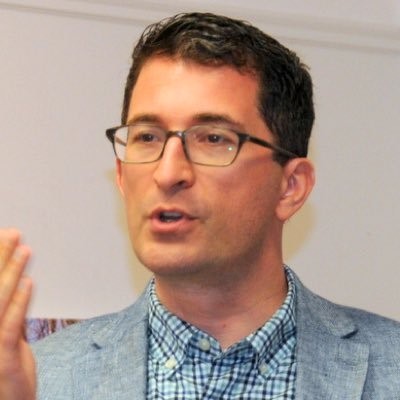 Dr. Heath Brown is an Associate Professor of Public Policy at John Jay College, City University of New York, and the CUNY Graduate Center. In addition to his teaching and research, Dr. Brown is Reviews Editor for “Interest Groups and Advocacy” and hosts a podcast called “New Books in Political Science,” where he interviews new authors of political science books. He is also an expert contributor to The Hill, The Atlantic magazine, and American Prospect magazine.
Dr. Heath Brown is an Associate Professor of Public Policy at John Jay College, City University of New York, and the CUNY Graduate Center. In addition to his teaching and research, Dr. Brown is Reviews Editor for “Interest Groups and Advocacy” and hosts a podcast called “New Books in Political Science,” where he interviews new authors of political science books. He is also an expert contributor to The Hill, The Atlantic magazine, and American Prospect magazine.
John Jay Scholars on the News – Deferred Action for Childhood Arrivals (DACA and Dreamers)
Hundreds of thousands of immigrants to the United States who arrived as children were protected by the Obama-era Deferred Action for Childhood Arrivals program, which allowed them to live, study and work in the country. Shortly after entering office, Donald Trump put a (currently defunct) deadline on phasing out the program and asked Congress to create a permanent solution which has not yet emerged, making these hundreds of thousands of immigrants into a political football and creating extreme anxiety about their futures. Despite professed political will on both sides of the aisle to keep DACA program beneficiaries (often conflated with Dreamers, or supporters of a Development, Relief, and Education for Alien Minors Act) in the country, the process of creating a legislative solution to protect these individuals has gotten bogged down amid new debate over levels of legal as well as illegal immigration, discussion of building a wall on the US’s southern border, and related issues. As a case makes its way through the courts, there are currently no signs of progress being made, whether on a short- or long-term solution for Dreamers, or for comprehensive immigration reform more broadly.
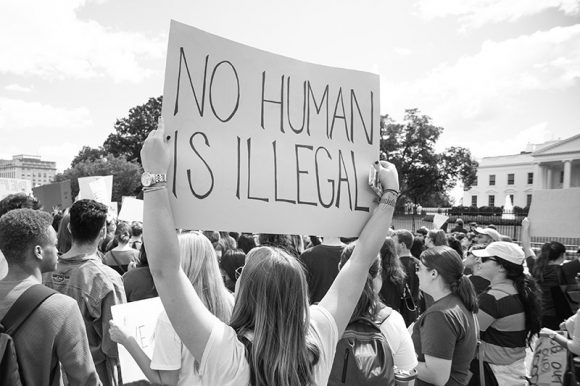
The fight over Dreamers is ongoing, thanks to a court order staying the Trump Administration’s directives to terminate the Deferred Action for Childhood Arrivals (DACA) program and continuing Congressional inaction toward creating a path to citizenship. What do you think is the ideal fix for Dreamers?
Jamie Longazel (Associate Professor, Political Science): Some may argue that blanket citizenship for Dreamers is not possible, but I’m a firm believer in working to expand the realm of possibility.
Isabel Martinez (Assistant Professor, Department of Latin American and Latina/o Studies): The ideal legislative fix for Dreamers is a pathway to citizenship that is not punitive and takes into account the many years that they have lived in the United States. This means eliminating the conditional permanent resident provisions that have been included in several versions of the “Dream Act” that in some cases mandate thirteen total years before the ability to apply for citizenship; lowering application fees; and widening the ability to regularize status. Better legislation would raise the limit on the age of arrival (now sixteen) and remove the maximum age (currently thirty). It would also include a way for Dreamers’ parents to regularize their statuses, either via sponsorship by Dreamers or other citizen children, or on their own. It is wholly punitive to grant children of immigrants a pathway to citizenship and not their parents.
Dan Stageman (Director of Research Operations, Office for the Advancement of Research): Dreamers are a particularly sympathetic class of immigrants because they fit into the American narrative of meritocratic achievement, and because they were too young to be seen as culpable for the “crime” of their unauthorized presence in the US. In a moral sense, however, they are no more deserving of citizenship than low-wage immigrant workers who underpin significant sectors of the American economy, who pay taxes, and contribute to their communities of residence in countless ways. Perhaps more importantly, Dreamers are connected to this supposedly less deserving segment of the undocumented population through family ties and social bonds. So no legislative fix that focuses narrowly on Dreamers is intrinsically good for them – it is simply seen as more politically possible than a genuinely inclusive and comprehensive approach to legislation.
Part of the problem with making a push toward legislative change is that issues tend to fall out of the news cycle or be supplanted by newer and bigger issues. How can activists keep DACA at the forefront of legislators’ minds and continue to push for change?
Isabel: Immigration activists have been fighting for a Dream Act for sixteen years, but what is hopeful is that we are currently seeing the highest percentages of voters supporting a way for Dreamers to remain in the country legally. Activists and allies must be media and politically savvy and ensure that this support continues and grows, and is continuously broadcast to legislators. This means that DACA activists and allies must be media and politically savvy. Media and legislators must also do the right thing to build further support to get a law passed.
Jamie: I think activists deserve a lot of credit for keeping this conversation going, despite the media’s tendency to get bored and move on. My sense is that, within activist circles and immigrant communities, this issue hasn’t gone away at all, even if the national media has stopped covering it and we have temporarily lost legislators’ attention.
One helpful tactic for activists to consider as they try to build the power necessary to enact meaningful change is issue linking. DACA is about immigration, but it’s also about economic injustice, race, and unequal access to certain rights and privileges. By bringing DACA recipients and other undocumented folks into the conversation on, say, universal healthcare (and vice versa), not only does the issue stay on the agenda, but it also helps to boost cross-issue solidarity where we’d otherwise have activists working in silos.
Dan: What is striking is when you see groups like United We Dream – an undocumented youth grassroots organization – shifting their focus to providing practical support for immigrants facing deportation. It’s an indication that the faith these groups place in the political process to solve their very real and immediate human problems is at a low ebb.

Can you state the case for allowing Dreamers to stay in the United States?
Isabel: Dreamers are already Americans! They have assimilated – the only thing that separates them from other young people is a piece of paper. Removing Dreamers would be removing Americans, as well as much-needed talent and potential in which this country has already invested. Additionally, sending Dreamers back to countries and communities that they do not know and where they do not possess social ties is setting them up for failure. These countries have limited plans to receive and integrate them.
Jamie: I don’t think Dreamers are especially deserving because they are high achieving or assimilated. Claims like these can reinforce notions of “us” versus “them” that have long plagued the immigration debate. I think they are deserving because they are human beings, because no one deserves to live in fear, because no one deserves to be denied access to basic rights. I think Dreamers should be permitted to stay in the United States because it is the right thing to do.
Isabel: The other case is rooted in the United States’ obligations as an imperialist state: the majority of DACA recipients are Mexican, approximately 79%. Their arrivals to the United States coincided with the shocks or aftershocks of economic deals, including NAFTA, made between the US and Mexico that had losers as well as winners, namely many poor Mexican families who could no longer survive due to conditions of the deals. If we look at other countries of origin including the Dominican Republic, Guatemala, and El Salvador, we see immigration as the effect of failed or highly lopsided bi-national policies enacted with the United States. This is considered alongside increased border militarization that made the conditions of circular migration deadly and expensive for adult migrants like these young peoples’ parents. The United States has had its hand in the conditions that pushed many families from these communities to enact strategies that let them survive together; as such, the United States has a moral obligation to right these wrongs by receiving and integrating Dreamers and other immigrants.
Dan: I would again broaden the lens to include all “unauthorized permanent residents,” a group that includes any individual who has built the kinds of social and economic ties to the US that are the essential features of establishing long-term community membership, but is unable to legalize their presence. That definition in and of itself makes the case: the ethical framework for community membership goes back at least to Rousseau’s Social Contract, and the mutual obligation it establishes between the individual and their society. Dreamers and other unauthorized permanent residents are fulfilling their end of the social contract through their economic and cultural contributions to American life; unfortunately, the federal government has not reciprocated. Congress passed the last comprehensive immigration law in 1996 – over 20 years ago. The heartbreaking stories that have recently become so common, of individuals deported after 20, 30 or 40 years of US residency, are the direct result of Congress’s historic refusal to address the instability and vulnerability these immigrants have faced throughout their time in the country.
The reality is that vulnerable people are easy to exploit – illegality is, in effect, an informal guest worker program that allows the US economy to benefit from Dreamers and other unauthorized permanent residents without providing for their welfare. This is also why local governments and private prison companies have been able to take increasingly entrepreneurial approaches to their involvement in immigrant detention and deportation. The simple case for a path to citizenship is that these forms of exploitation are morally repugnant and un-American.
What is the best thing others can do to support the Dreamers?
Jamie: If we are talking about folks who are not immigrants, or immigrants who do not have a precarious legal status, then my suggestion would be to stay active – attend rallies, share information, or join an organization. And I think folks should think hard about how our struggles are intertwined. Solidarity is how otherwise powerless groups become powerful. But it is important that Dreamers and other affected immigrants lead the way, because sometimes well-intended actions and words from unaffected people can do more harm than good.
Dan: Give generously to advocacy organizations like the New York Immigration Coalition or the Immigrant Legal Resource Center. Write and call senators and congresspeople in support of DACA legislation. Most importantly, learn about the needs and vulnerabilities of immigrant communities where you live and work, and intervene in whatever way you can.
CUNY has one of the largest populations of Dreamers of any university system in the country, and while it would be irresponsible for any institution to tell these students that we can keep them safe from deportation, we can find other ways to help alleviate the incredible stress they’ve been under since the 2016 election; for example, establishing scholarships and emergency support funds, holding regular legal clinics, providing physical and mental health services, and ensuring the confidentiality of their education data are some of the things that CUNY has taken on to support our Dreamers.
Isabel: Individuals can follow our lead at John Jay for local-level support. For college-going Dreamers, we will be opening an Immigration Student Success Center in the fall that will centralize resources – academic, financial, social and legal – that are essential to their success. This is the culmination of two and a half years of work that focused on creating systems to protect, support, and empower our John Jay Dreamers.
In addition, according to a variety of polls the majority of Americans support a pathway to citizenship for Dreamers. Voters need to turn that passive support into active support and pressure their representatives to vote on a bill ASAP, with calls, emails, visits, op-eds and town hall testimonials that share how important it is that this issue is resolved. This pressure should be placed at all levels of government and in the private sector. Private citizens and corporations can advocate for state and local government to support Dreamers by passing bills that provide in-state tuition, state financial aid, and drivers’ licenses; allow them to obtain professional licenses to practice medicine and law, or teach; and restrict cooperation with DHS and ICE.
Some states and institutions are instituting limited solutions for DACA recipients, like a bill proposed in Rhode Island to allow DACA recipients to obtain drivers licenses and work permits despite expired federal status, or certain universities helping with DACA renewal fees or offering special opportunities for non-citizenship-dependent research and educational opportunities. How helpful do you think these solutions are in mitigating the current circumstances Dreamers find themselves in?
Isabel: These are very helpful, but aren’t enough. In-state tuition and financial aid can mean the difference between DACA recipients enrolling or not in college, and, once enrolled, stopping frequently to save money or paying by semester. And of course, there are significant wage differentials between those with and without college degrees or professional development opportunities. Providing funding for internships and research enables DACA recipients to position themselves to procure better (status and –paying) jobs during school and after graduation.
Dan: While state and local-level solutions are not a replacement for comprehensive federal immigration reform including a path to citizenship, they are absolutely necessary in its absence. Most important among these solutions are the ones that, like California’s recent SB-54, limit law enforcement data sharing and cooperation with Immigration and Customs Enforcement (ICE). It’s important for states and localities to announce their intentions to protect their communities from arbitrary detention and deportation, and follow through with legally binding statutes that prevent local law enforcement agencies from contributing to the process in any way.
Jamie: What I appreciate most about measures like this is their symbolic power. These places are leading by example. They’re showing us what inclusion could look like, showing us that they are not afraid, and expanding our collective sense of what is possible.
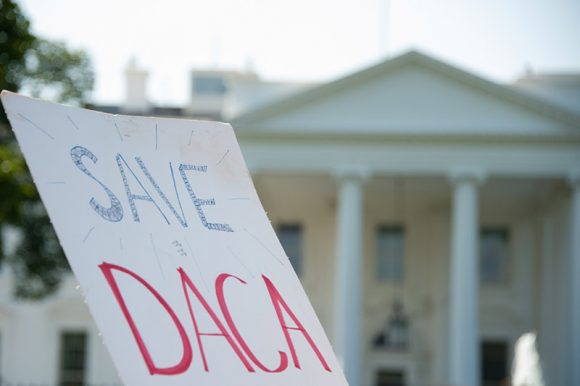
Does the focus on DACA recipients in the news and policy debate overlook other undocumented immigrants, or ease their own paths toward citizenship? Do you believe this debate will end up helping all undocumented residents?
Dan: I think overall the focus on DACA recipients does a disservice to other undocumented immigrants. It sets up a contrast between the supposedly achievement-oriented, ‘model immigrant’ Dreamers, and their hard-working (but often low-wage) parents and neighbors who are no less deserving. This is a false dichotomy, and not one that anyone who supports immigrant rights should be playing into.
Jamie: I think the focus on DACA recipients has overlooked other undocumented immigrants, but only because of the way the issue has been framed (i.e., depicting DACA recipients as deserving in contrast to other undocumented folks). There are plenty of other ways we can frame the issue that are actually favorable to immigrants across the spectrum of legal statuses.
For instance, I think talking about children who were brought to the United States without authorization can complicate what is otherwise a rather simplistic immigration debate. People talk about “legal” and “illegal” immigration as though there is a binary that is synonymous with “good” and “bad.” But here we see that the reality is far more complicated. DACA also opens up an opportunity to talk about nuances that many non-immigrants are unaware of: mixed-status families and the unique experiences of “1.5 generation” immigrants, to name a couple of examples.
What I’m saying is that so much of our public debate has relied on stereotypes and myths! With DACA, I think we have an opportunity to confront and challenge those myths, but we have to be very careful not to reinforce them.
(Answers may be lightly edited for clarity.)
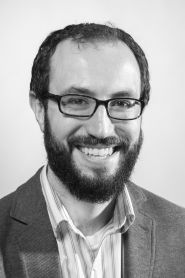 Dr. Jamie Longazel is an Associate Professor in the Department of Political Science at John Jay College. His research examines issues of race and political economy, typically within the contexts of immigration and imprisonment. His recent book, Undocumented Fears: Immigration and the Politics of Divide and Conquer in Hazleton, Pennsylvania, uses the debate around Hazleton’s controversial Illegal Immigration Relief Act (IIRA) as a case study that reveals the mechanics of contemporary divide and conquer politics and makes an important connection between immigration politics and the perpetuation of racial and economic inequality.
Dr. Jamie Longazel is an Associate Professor in the Department of Political Science at John Jay College. His research examines issues of race and political economy, typically within the contexts of immigration and imprisonment. His recent book, Undocumented Fears: Immigration and the Politics of Divide and Conquer in Hazleton, Pennsylvania, uses the debate around Hazleton’s controversial Illegal Immigration Relief Act (IIRA) as a case study that reveals the mechanics of contemporary divide and conquer politics and makes an important connection between immigration politics and the perpetuation of racial and economic inequality.
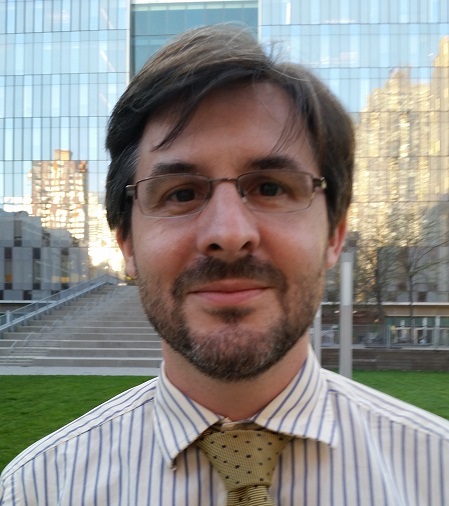 Dr. Daniel Stageman is the Director of Research Operations of John Jay’s Office for the Advancement of Research. His academic work examines political economy and profit in the detention of American immigrants, and the economic context surrounding federal-local immigration enforcement partnerships.
Dr. Daniel Stageman is the Director of Research Operations of John Jay’s Office for the Advancement of Research. His academic work examines political economy and profit in the detention of American immigrants, and the economic context surrounding federal-local immigration enforcement partnerships.
 Dr. Isabel Martinez is an Assistant Professor of Latin American and Latina/o Studies and the Founding Director of U-LAMP, the Unaccompanied Latin American Minor Project, a research and service project that focuses on providing academic, social and legal support to recently arrived immigration minors in removal proceedings. She also serves as the faculty adviser to the JJay DREAMers club.
Dr. Isabel Martinez is an Assistant Professor of Latin American and Latina/o Studies and the Founding Director of U-LAMP, the Unaccompanied Latin American Minor Project, a research and service project that focuses on providing academic, social and legal support to recently arrived immigration minors in removal proceedings. She also serves as the faculty adviser to the JJay DREAMers club.

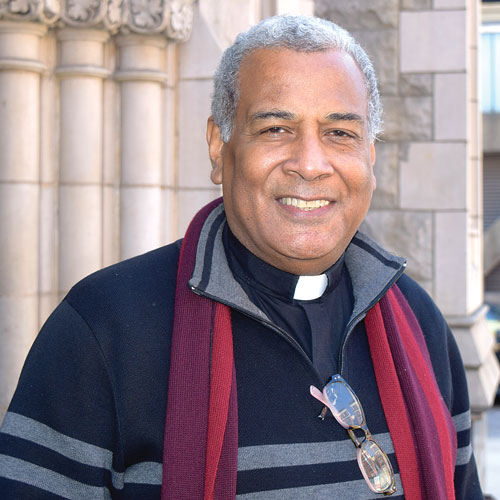 Dr. Luis Barrios has been a faculty member at John Jay College for 28 years, and at CUNY for even longer. During that time, he has worked on projects that blend social action and scholarship, involving gangs and gang violence, deportation, human rights, clinical work focused on trauma and abuse, and contemporary perspectives of life on the Dominican-Haitian border.
Dr. Luis Barrios has been a faculty member at John Jay College for 28 years, and at CUNY for even longer. During that time, he has worked on projects that blend social action and scholarship, involving gangs and gang violence, deportation, human rights, clinical work focused on trauma and abuse, and contemporary perspectives of life on the Dominican-Haitian border.


Recent Comments